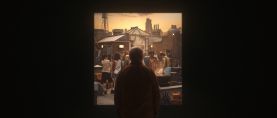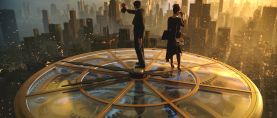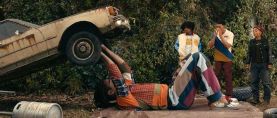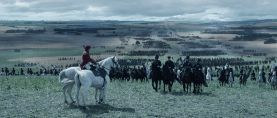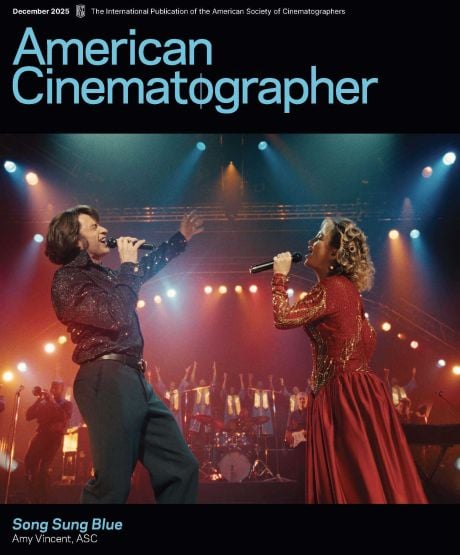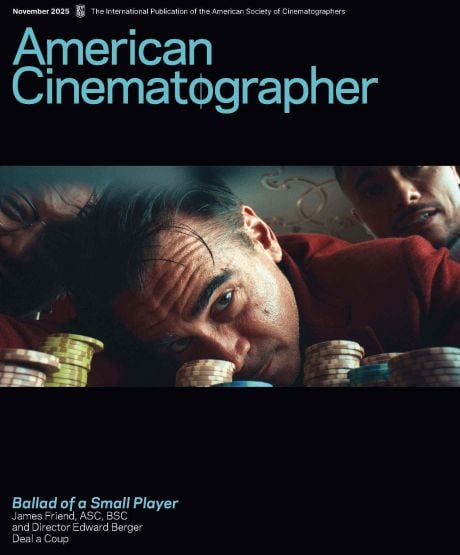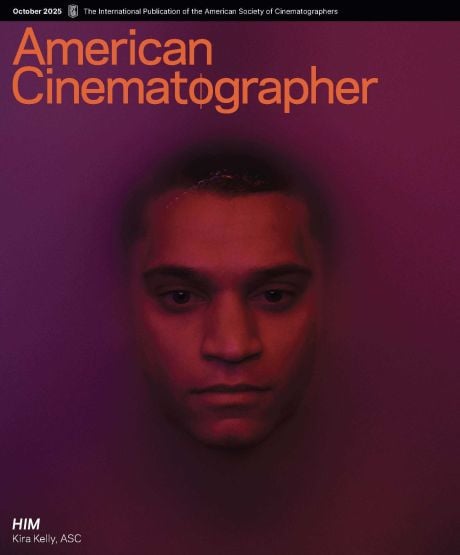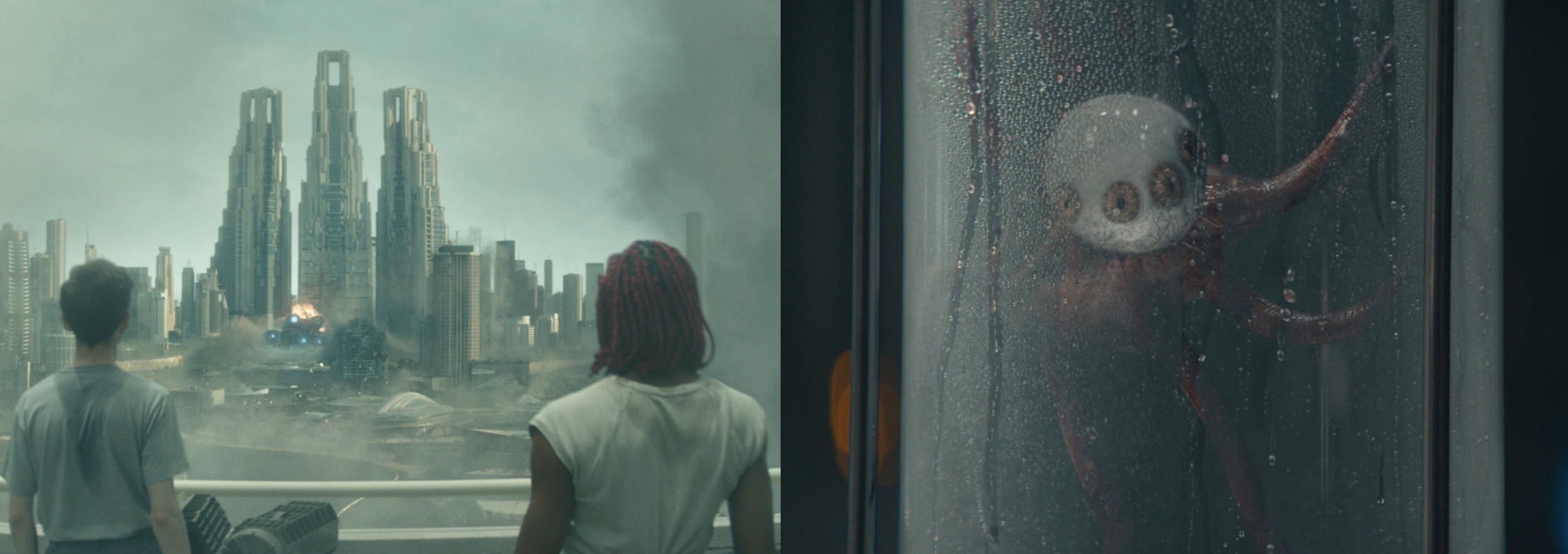
Building the World of Alien: Earth
Dana Gonzales, ASC and VFX supervisor Jonathan Rothbart discuss creating the sci-fi horror series' sights and frights, from spaceship crashes to xenomorphs and tentacled eyeballs.
Three decades after Ridley Scott's Alien (shot by Derek Vanlint, CSC; AC Aug. '79), plans emerged for a television series, Alien: Earth. With Scott on board as an executive producer and Noah Hawley, creator of the TV series Fargo (AC July '24) as show-runner, the series appeared on FX Networks as eight one-hour episodes, predating Alien by two years.
Set in 2120, the narrative follows the USCSS Maginot, a space research vessel that crash-lands on Earth with a cargo including the fearsome biomechanoid "xenomorph." The resulting chaos involves a power struggle between Weyland-Yutani Corporation that owns the ship and Boy Kavalier (Samuel Blenkin) owner of the rival Prodigy Corporation who attempts to contain the creatures using a new form of hybrid android led by Wendy (Sydney Chandler) and other "Lost Boys."
Referencing Alien
Dana Gonzales, ASC — Hawley's collaborator on Fargo and earlier projects — joined the production in 2022. Gonzales' role evolved from cinematographer of the pilot, to executive producer and director of four episodes; with other episodes photographed by Bella Gonzales; David Franco; and Colin Watkinson, ASC, BSC.
More on Alien:
"Alien and Its Photographic Challenges," by Derek Vanlint, CSC
"The Filming of Alien," by Ridley Scott
Derek Vanlint, CSC Discusses Alien on the American Cinematographer Podcast
Early discussions included the aesthetic approach toward creature effects, weighing digital effects with in-camera creatures, and the logistical challenges of spinning a high-tech yarn set in a plausibly-advanced 22nd century Earth. From the outset, Scott's 1979 film and its photography by Derek Vanlint, CSC remained a beacon alongside Adrian Biddle, BSC's work on the 1986 sequel. "Alien and Aliens were our playbook," says Gonzales. "For me, Alien was the visual [touchstone]. And then, Aliens was where it got into the action-oriented rollercoaster. But Noah wanted the audience to have the same feeling he'd experienced seeing Alien for the first time."
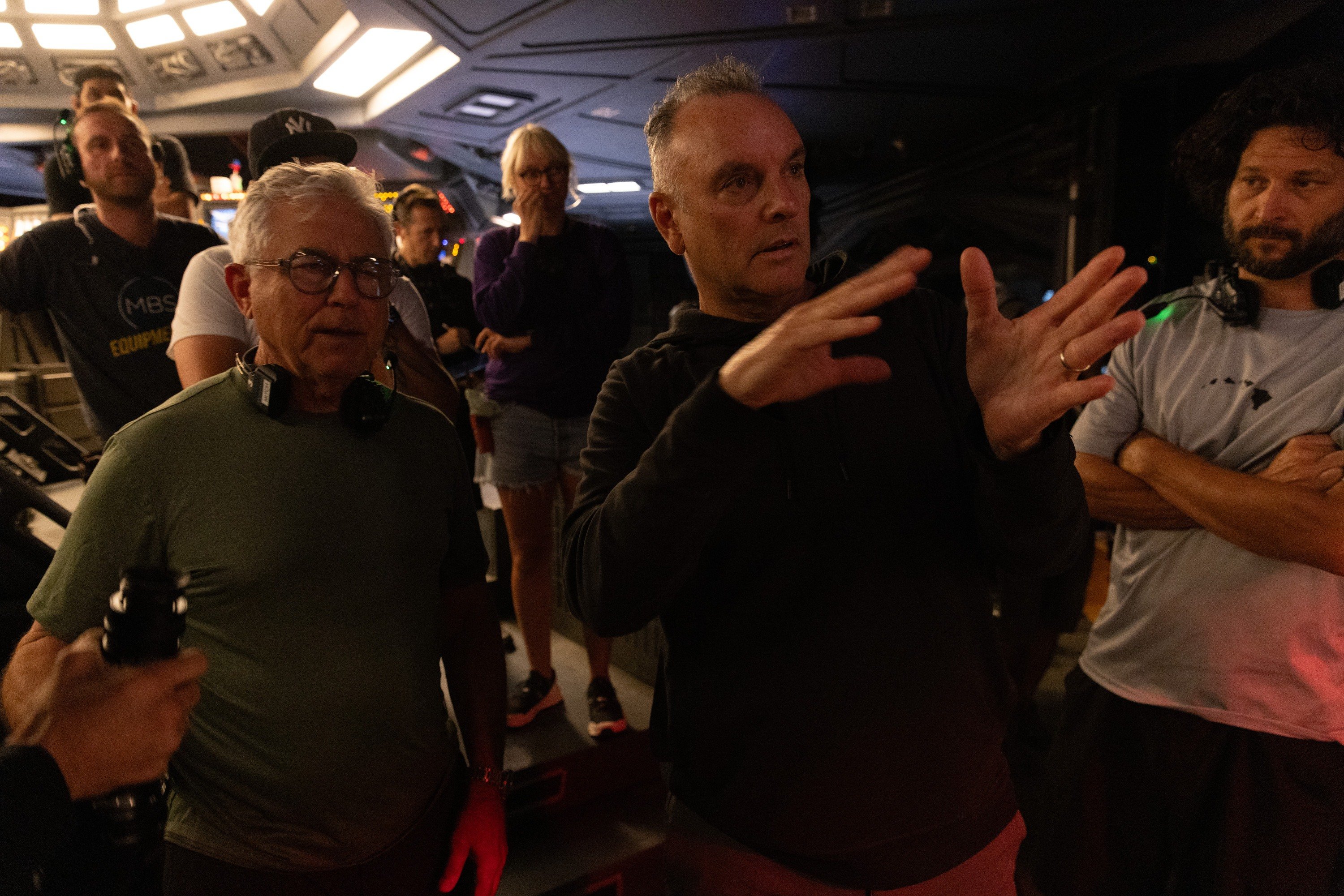
Gonzales selected a camera package that included the Arri Alexa 35 with Hawk anamorphic V-Lite, V-Plus, and Hawk V-Plus zooms, Hawk Macro anamorphic, and Service Vision Scorpio 25mm anamorphic lenses. Gonzales and gaffer Mark Clayton made use of modern lighting tools, including Arri SkyPanels and Orbiters and Creamsource Vortexes that they integrated into set designs working with production designer Andrew Nicholson on the first three episodes, and then Nicholson's art director Jason Knox-Johnson who served as production designer for remaining episodes.
Interiors of the USCSS Maginot were envisioned as a spacecraft engineered by the same company that built the Nostromo. Familiar structures included petal-like cryogenic chambers, grimy engineering corridors, and a hexagonal mess hall — featured in Episodes 1 and 5. Gonzales referred to archival screen-grabs on set and, prior to filming, worked with supervising colorist Tom Poole to build a 'show LUT' color paradigm. "Tom and I have worked together before," Gonzales explains, "and he already has aesthetics in his work that are very cinematic and filmic. I showed him references, including Alien, and he built our show LUT based on those conversations. It all started with Tom's LUT, and then we were informed as we were shooting."
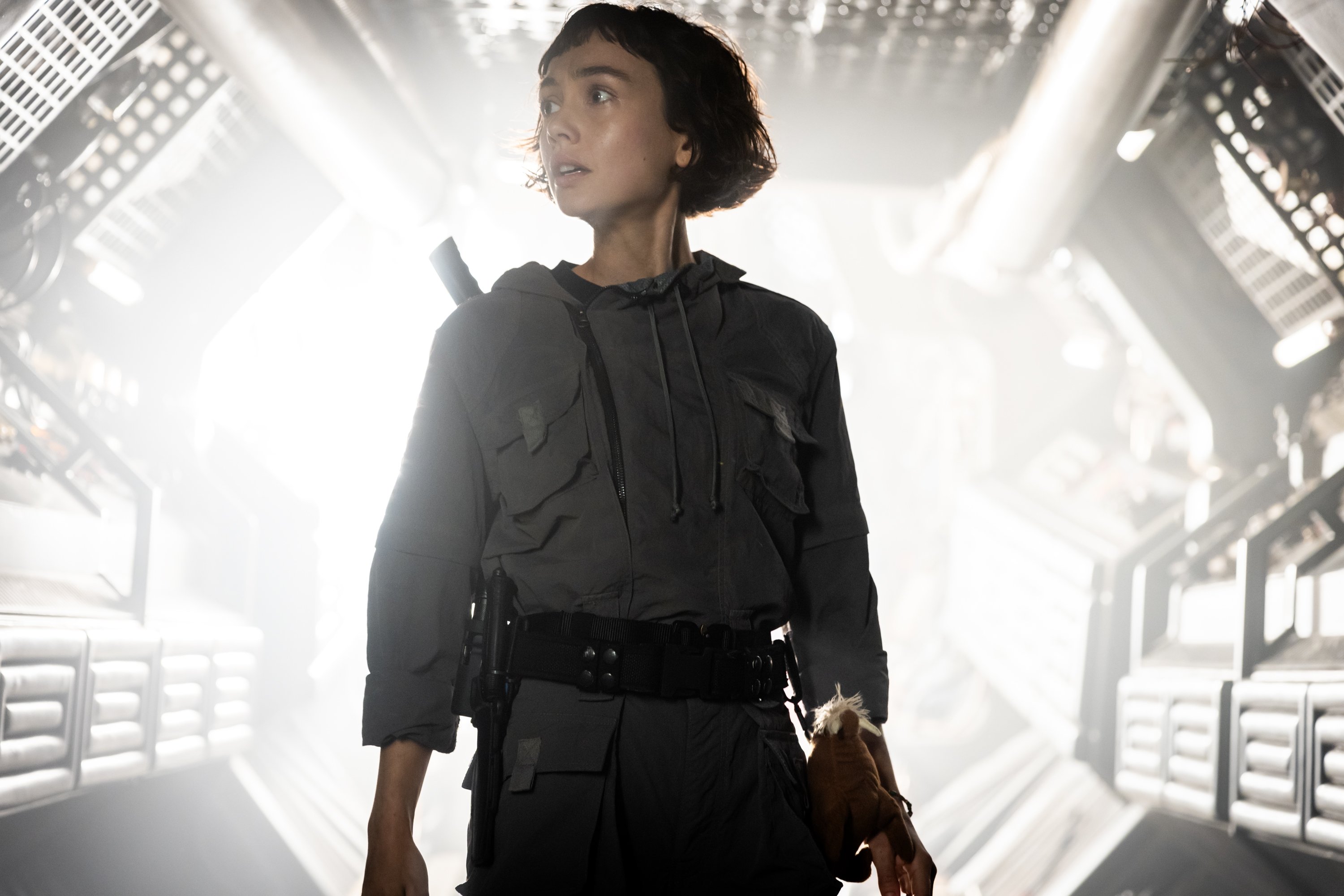
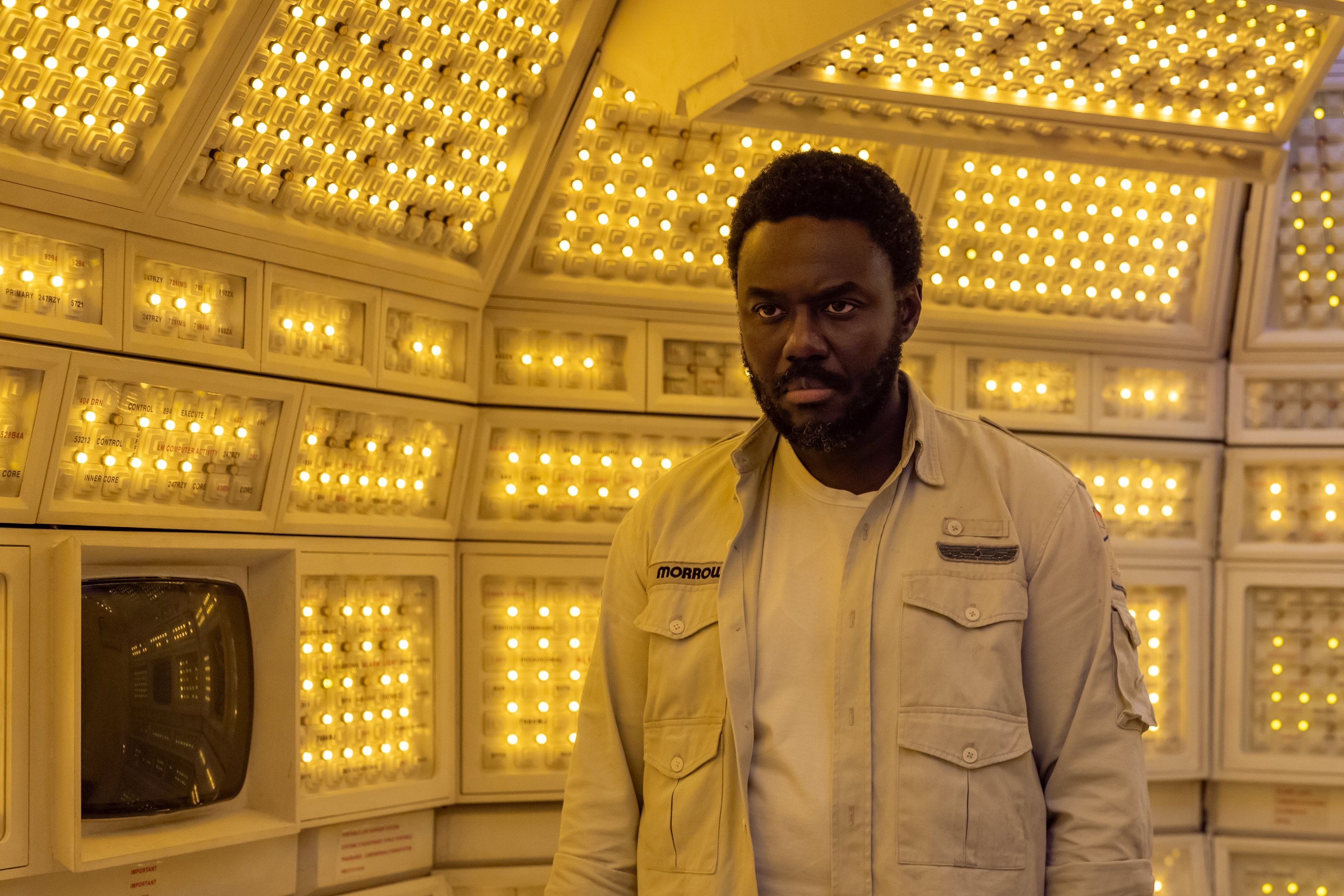
As a base of operations, the production selected Thailand, which provided vistas of 22nd century "Neo-Siam" Prodigy City, and Kavalier's secluded Neverland Research Facility. The 123-day shoot used 13 soundstages in Bangkok and locations including the city's Neon Market, futuristic Sindhorn Tower, and tropical locations 480 miles south. "Our story was set in a wet, overgrown world," says Gonzales. "Further south in Krabi, we shot exteriors — some of which we had to get to by boat — and big aerial shots of the jungle. The Bangkok skyline was less familiar to audiences, so it was very photographable; and then, we augmented those cityscapes."
Creatures and VFX
To plan augmentations, the production initiated research and development with visual effects supervisor Jeffrey Okun and his team for the shoot. VFX supervisor Jonathan Rothbart then joined postproduction, overseeing work at seven facilities — UPP, Untold Studios, Zoic Studios, Fin VFX, CoSA VFX, Crafty Apes and Pixomondo.
The series represented a unique opportunity for effects artists to revisit a seminal influence. "Alien has driven my vision of what sci-fi should look like since I was a child," Rothbart confesses. "It was a great opportunity to do some fun design with ships, creatures and shot design, but also to embody that '70s vision of filmmaking. Of course, we had the facility of CG, but we tried to bring a '70s feel to shots."
Digital artists studied Hawk lens characteristics to approximate the optics behavior in the digital realm. "Dana's choice of anamorphic lens had interesting focal patterns and chromatic aberrations," Rothbart explains. "Each lens was dynamic and each one was slightly different. That put an onus on us to constantly have that same level of softness and blurry areas within our work. Some shots had chromatic distortion on the side edges, but others were [affected] more in the corners. But that lent itself to this '70s-styled look when we followed the look of those lenses."
For scenes featuring the xenomorph, the production strove to initiate creature effects as much as possible in-camera. Wētā Workshop focused on creation of suits and mechanical versions of the adult xenomorph, while Bangkok-based Second Skin Studio handled other puppets and prosthetics, along with makeup effects and prosthetic designer Steven Painter.
"Our xenomorph had to do more than any other xenomorph has ever done," says Gonzales. "We had a performer, Cameron Brown, in a suit. He did a lot of wire-work with stunt coordinator and second unit director Rob Inch. We had a stunt suit, a polished suit, a 'xeno' head puppeteered with electronic movement and a second [inner] mouth. Those were all as practical as they could be. And it was an evolution of design. In previous movies, the xenomorph was curated so the creature could be lit in a certain way to blend into a scene. Our xeno was very mobile, and the camera was constantly moving. That led to a lot of conversations about color. Noah wanted it to be bug-like and organic."
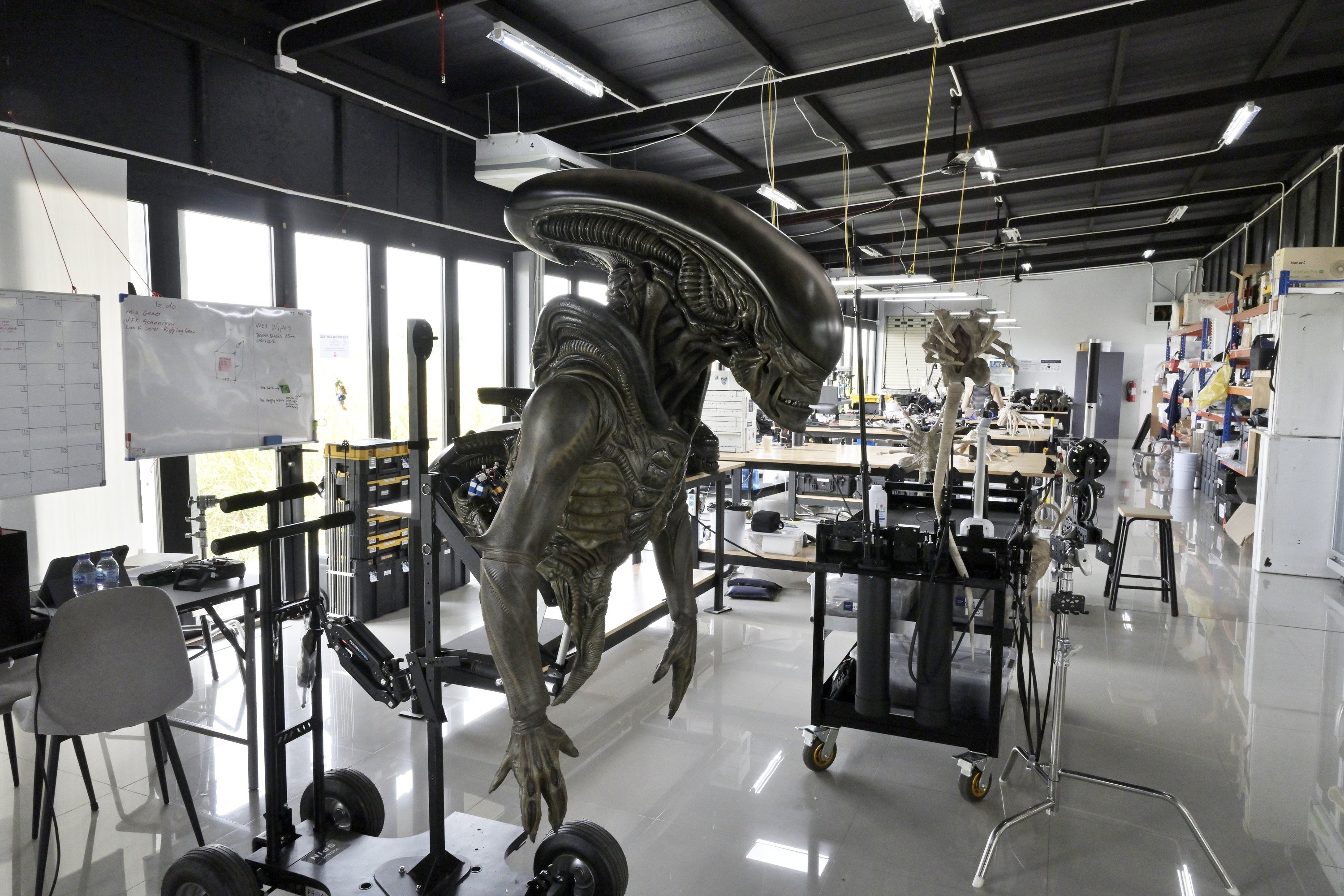
VFX assisted xenomorph performances using varieties of techniques designed as sleight-of-hand enhancements. "A great example of that is the moment the xeno attacks [Maginot executive officer] Zaveri (Richa Moorjani)," Rothbart notes, referring to a scene in Episode 5. "In that moment, we went through all the machinations of how we designed that creature, using different effects techniques so the audience can never predict the same gag. Where the xeno lowers down behind Zaveri, we added a CG tail. As it runs after her, we mixed between a fully-digital xeno and a xeno whose arms, legs and tail we replaced while retaining its practical body and head. When she hides behind a [bulkhead], he comes around, and then we're back into [a suit and] just a CG tail. And then, we added CG arms again. Having the suit in-camera held us to a standard, making sure we matched the practical. It was a perfect example of the dynamic relationship between all those disciplines."
Maginot Crash
To design exteriors of the Maginot hurtling toward Earth, the production developed conceptual art that evoked the scale and bulk of the Alien space tug. UPP then developed a highly detailed digital model and created a crash site crafted from production photography of Bangkok, with futuristic additions indicating a subterranean class divide.
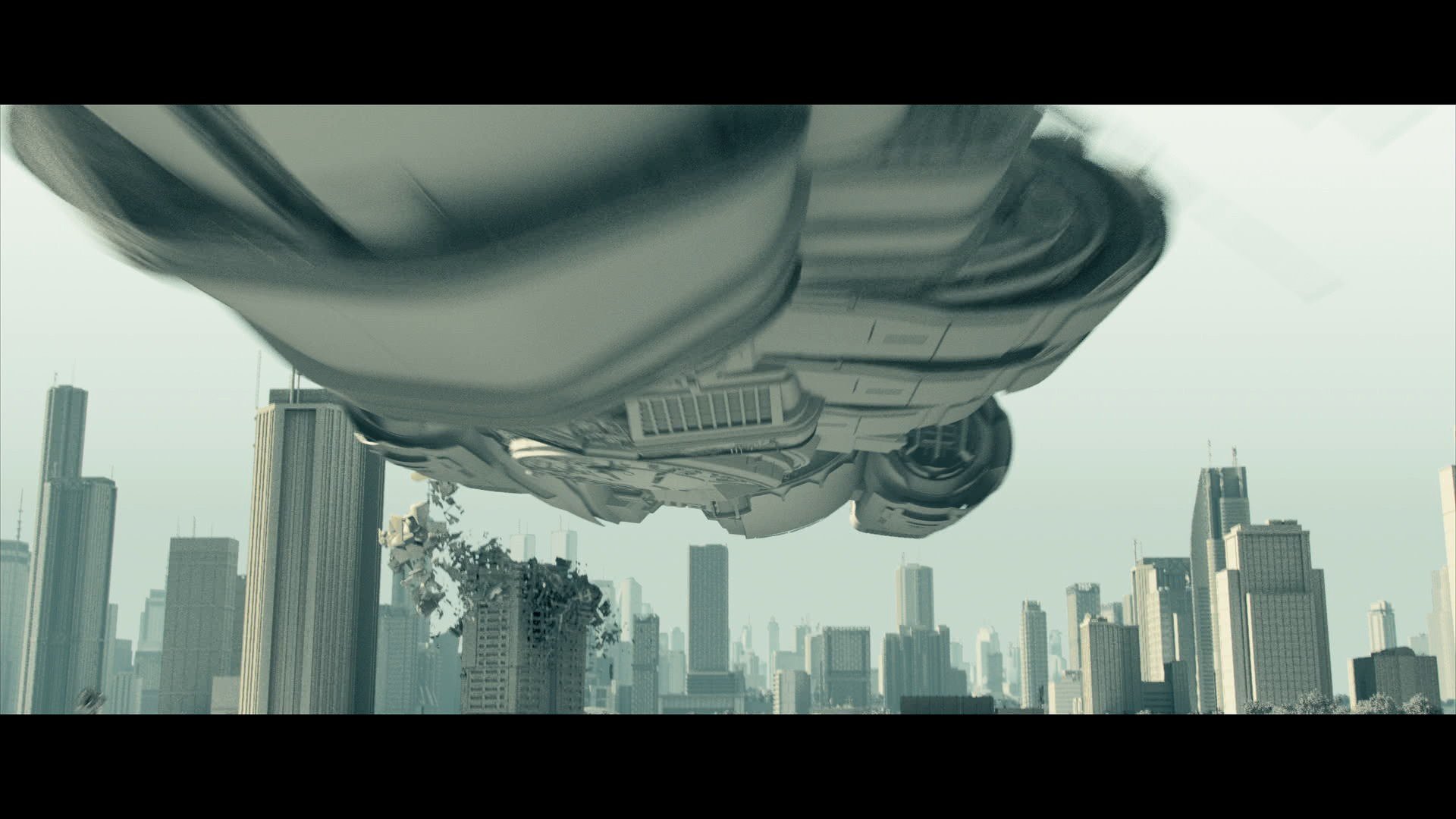
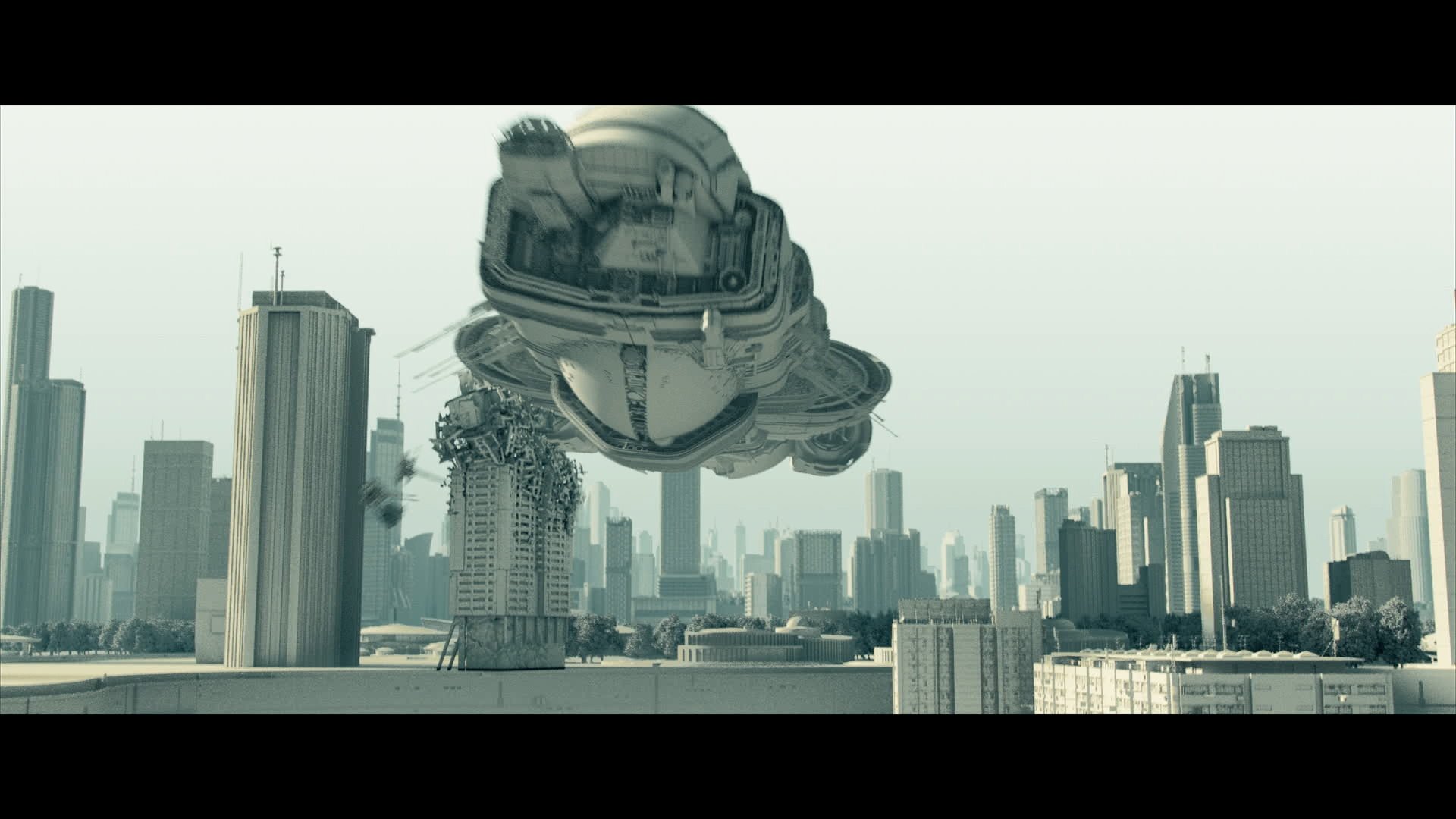
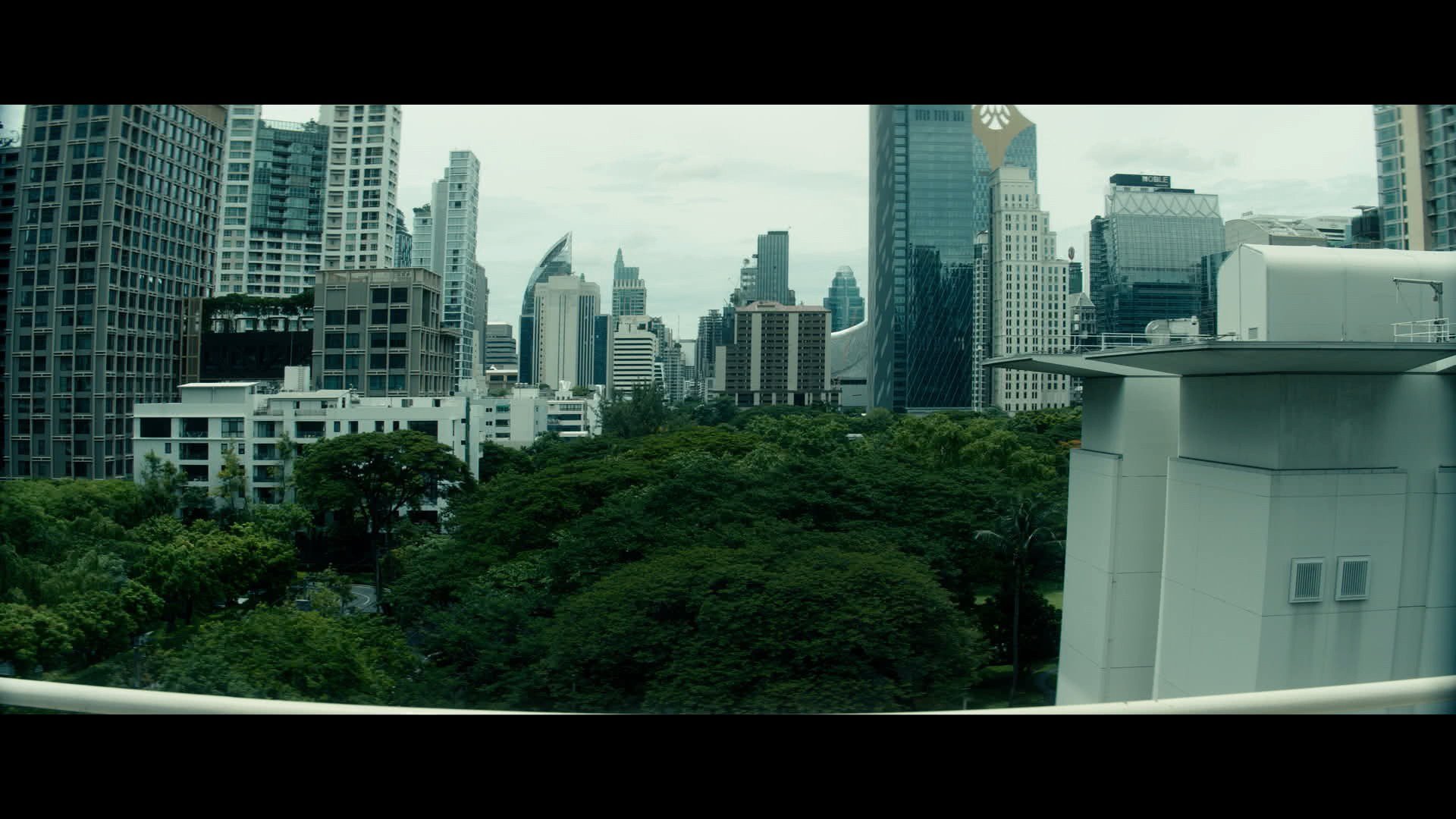
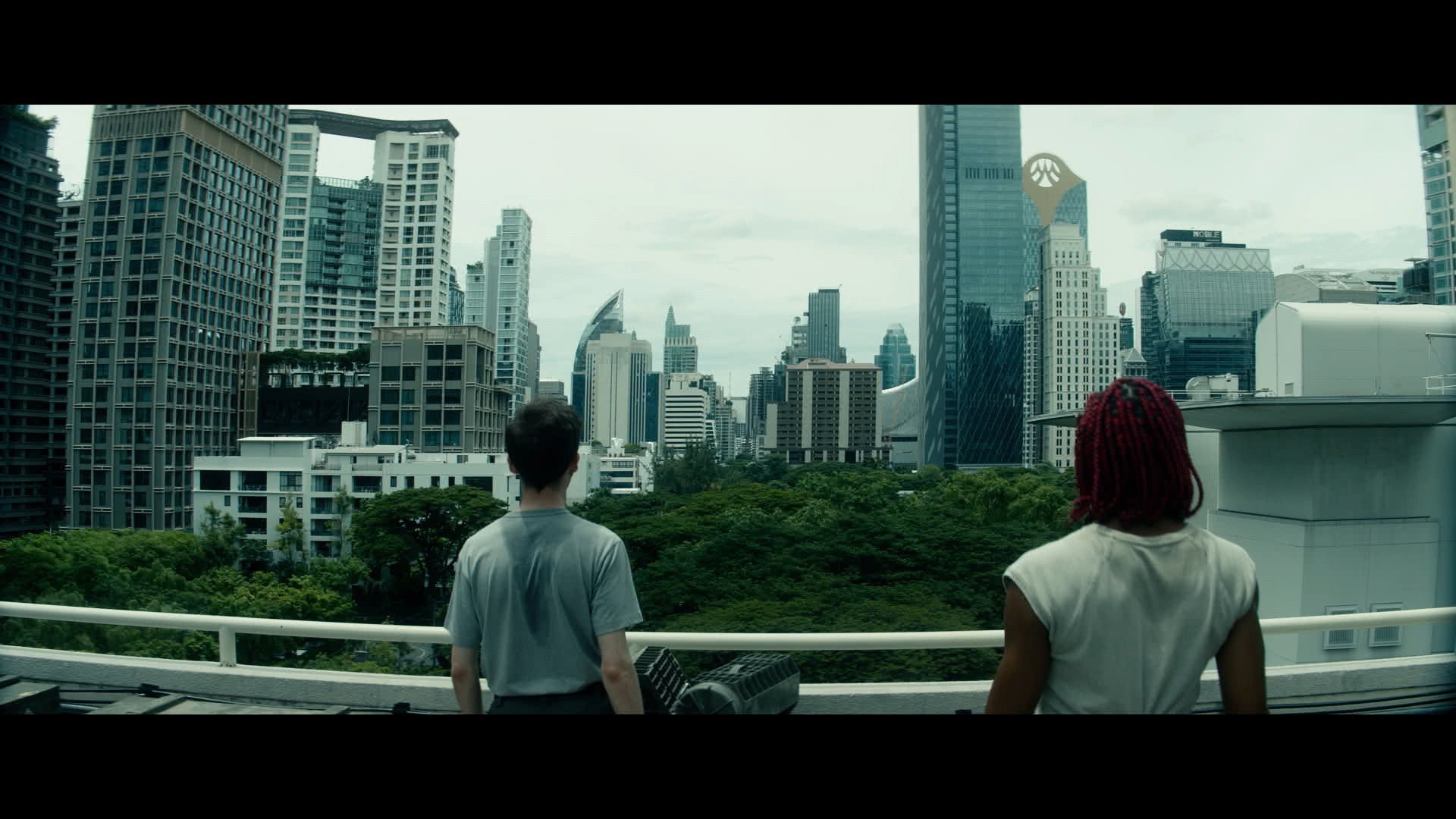
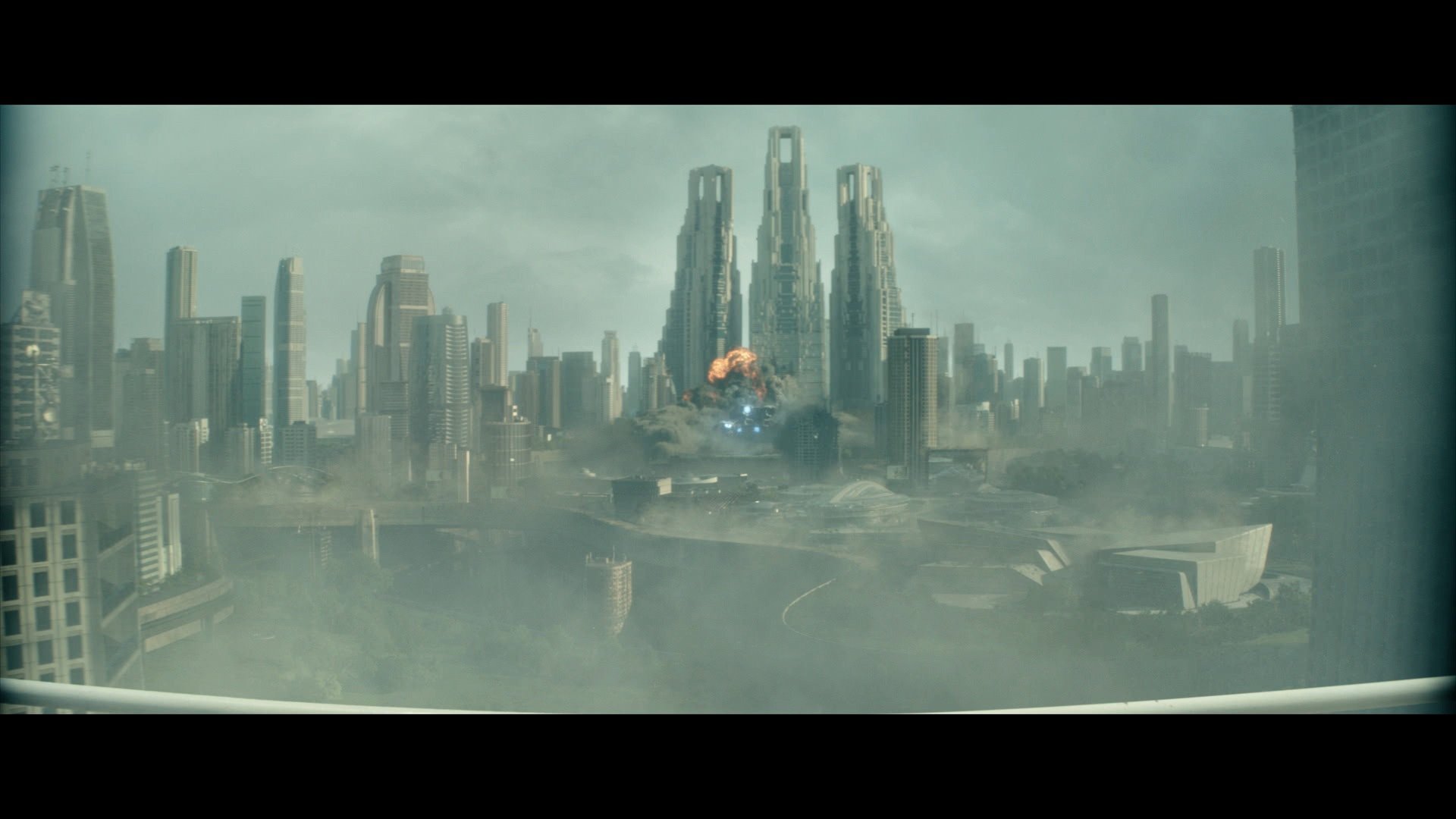
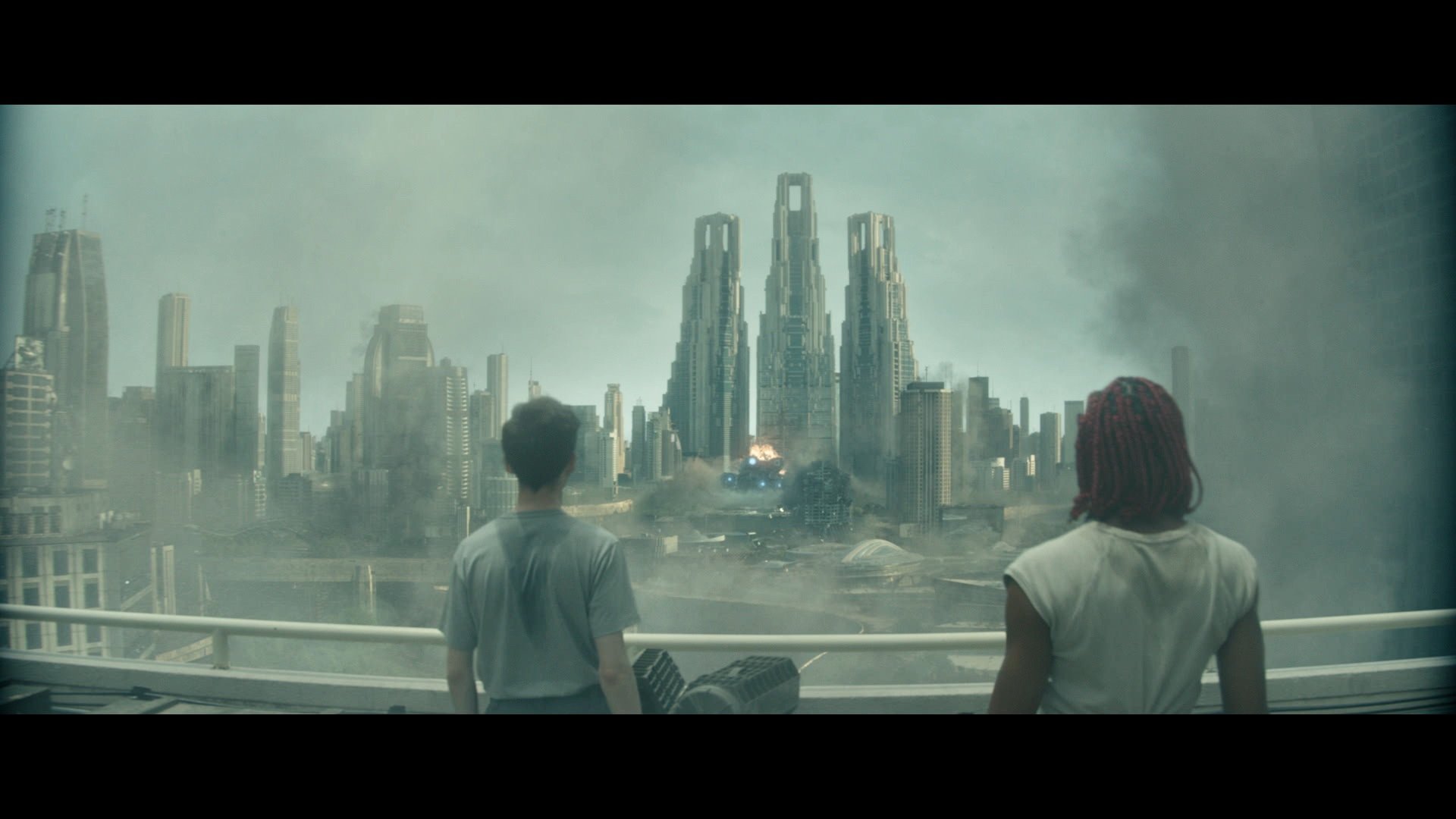
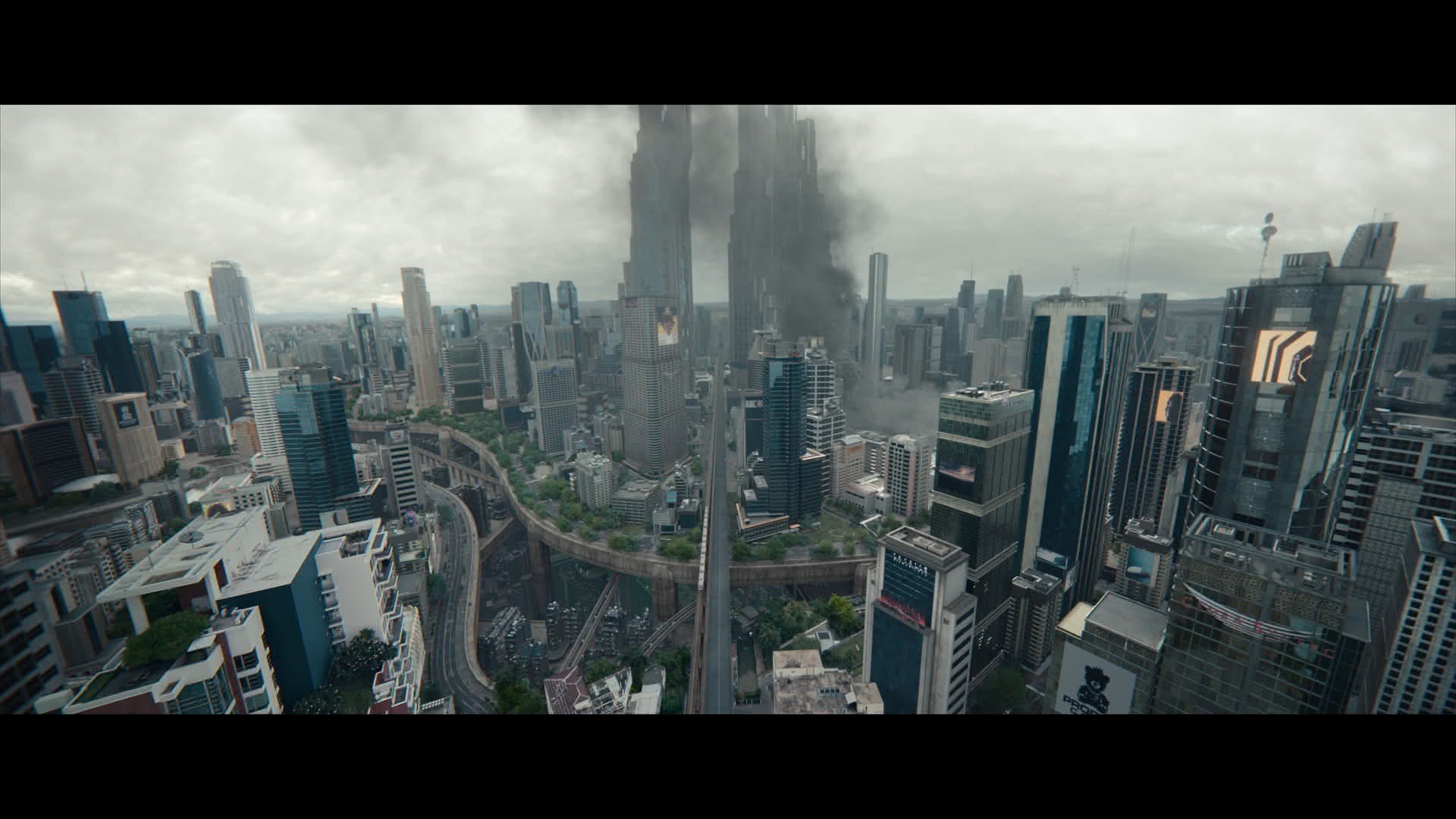
"We added an 'undercity,'" says Rothbart. "The idea was people lived in a 'plus' and 'minus' zone — the 'minus' live under the city, whereas the 'plus' live above. It's not highlighted in the show, but in wide shots of the crash, we added a ground level with buildings underneath."
For the spaceship's impact with a brutalist high-rise structure, UPP built towers with a utilitarian blocky lower level and more refined architectural higher levels inhabited by wealthy citizens. For wide shots of the Maginot descending, UPP generated an entirely CG city derived initially from Google Maps and Google Earth reference of Bangkok, then added futuristic towers and undercity sub-structures. Ground-level crash-site scenes were staged at Bangkok’s Neon Market, which UPP extended in mobile shots that weave through the chaos.
For crash-site interiors, the production used Bangkok's long-abandoned Khao San shopping mall. "That was an open space with ruined escalators in this abandoned mall," says Gonzales. "Andy [Nicholson] built the side of the Maginot and an engine-room hallway in there, with a chasm that characters have to cross from a destroyed apartment. We built that as a huge, multi-level set. It was an amazing use of space that made that sequence feel tactile."
Neverland Menagerie
The majority of the season's action takes place at Kavalier's Neverland retreat. Scenes of Wendy and the Lost Boys in structures adjoining the facility featured a location at the College of Music at Mahidol University, outside Bangkok. "We found that college location right before we shot that episode," says Gonzales. "It had the jungle, brutalist concrete buildings and a wood deck. We really scored there."
VFX enhanced Neverland plate photography using material sourced from tropical locations. "We added structures to the jungle," says Rothbart. "Some shots were entirely CG, when the ships were coming in and leaving. But we built those environments from location textures."
Inside Neverland, synthetic chief scientist Kirsh (Timothy Olyphant) oversees alien specimens retrieved by the Maginot, including T. Ocellus/Species 64, a devious, squid-like creature with seven legs and multiple irises. Second Skin created puppets for use on set, and Untold generated the creature, or "eyemidge," as it was referred to internally. "The eyemidge is 100-percent CG," says Rothbart. "We used the puppets for lighting and framing. But Untold animated all the leg and eye movement. We worked hard to make sure the eyes had depth in the ways they merged and separated." Untold imbued the eyemidge with scheming intelligence. "When the eyemidge is in captivity, he's cute and interesting, but when he escapes, we called him 'the agent of chaos.' And we tried to create a little romance between him and Kirsch. Anytime Kirsch is in the room, the eyemidge is always super-focused on him."
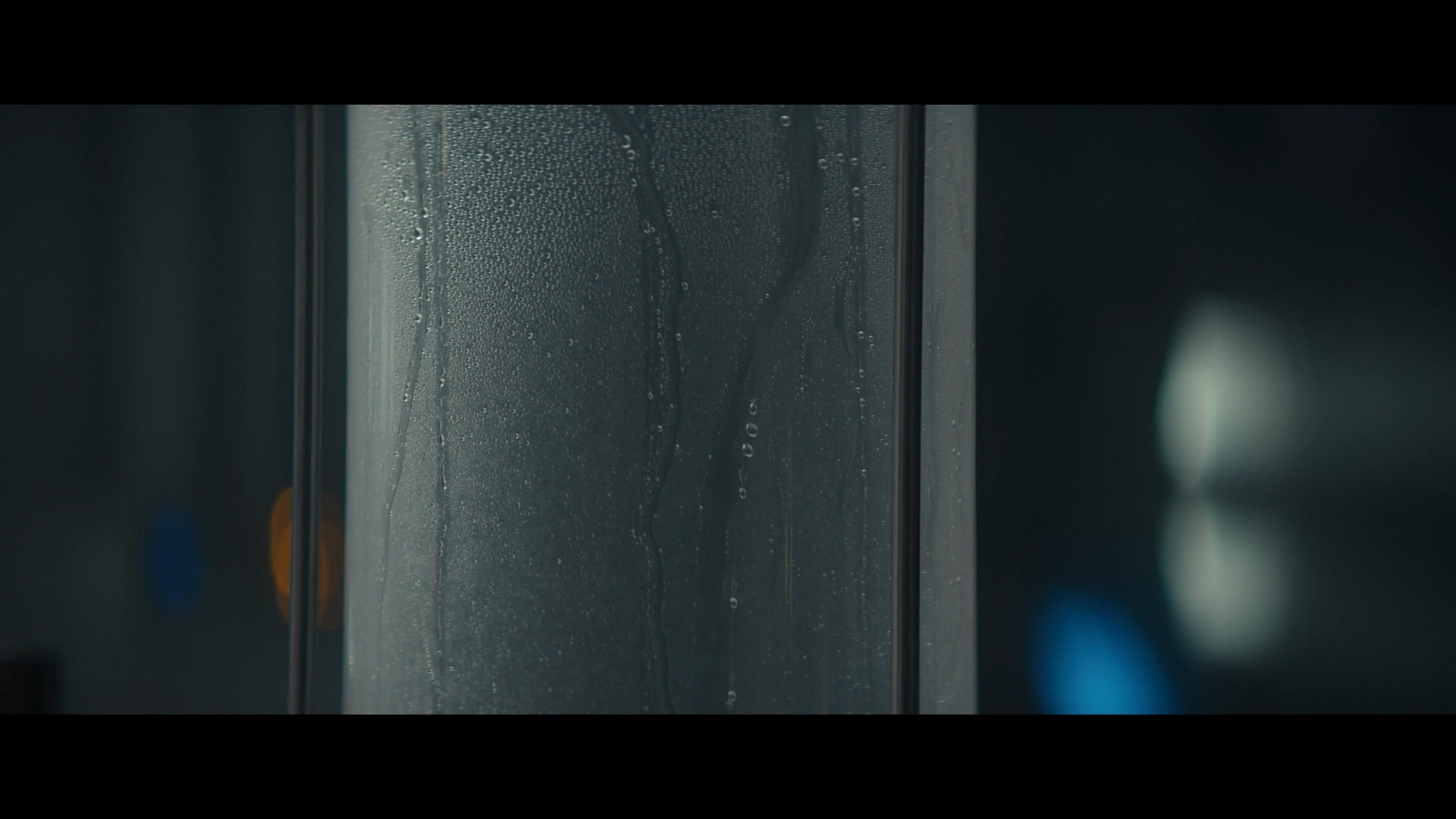
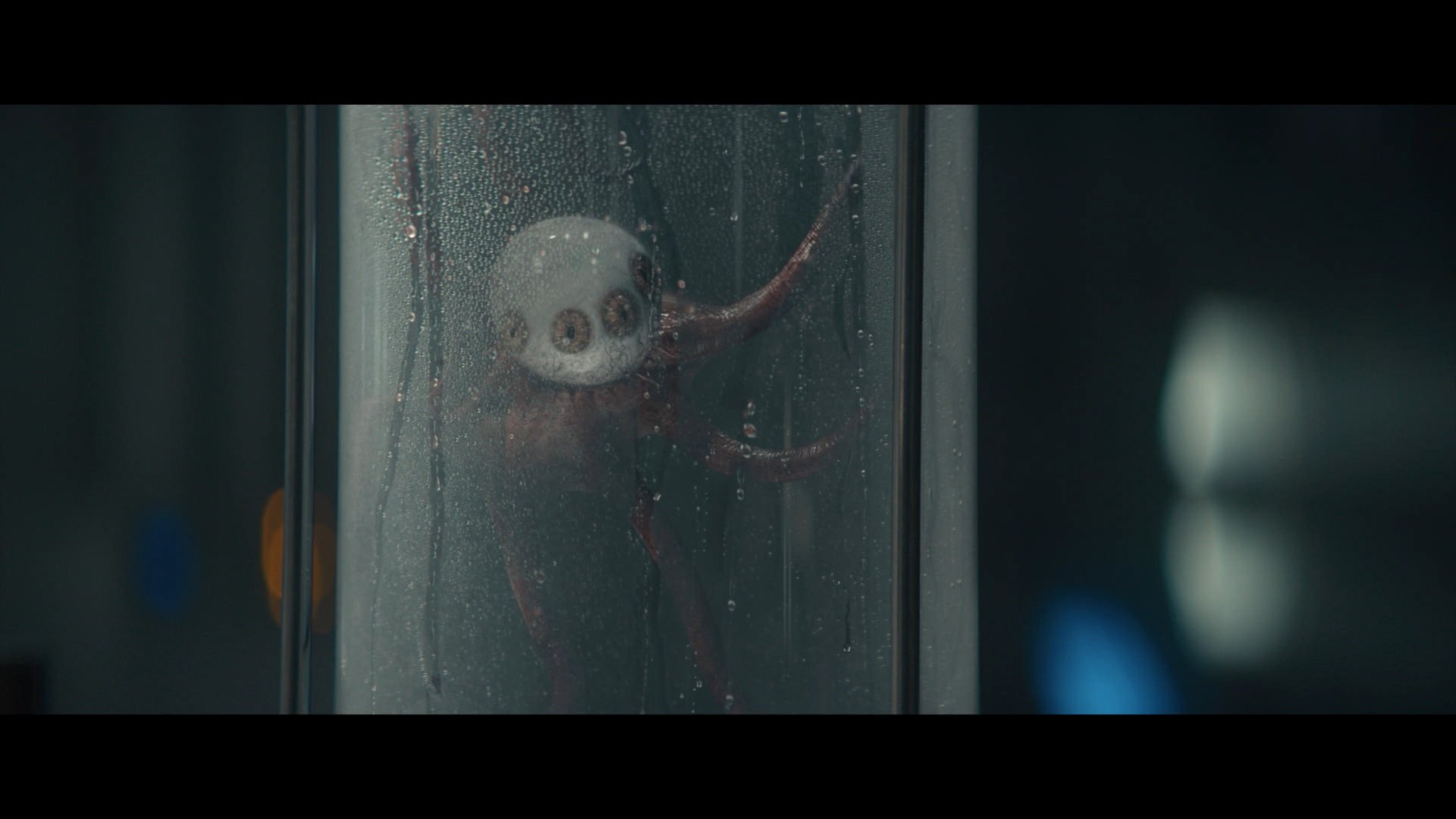
For eyemidge attacks, which displace its victims' eyeballs, Second Skin applied prosthetic effects to performers. VFX enhanced the makeups for alien iris action. Scenes of the eyemidge occupying a test-subject sheep used combinations of an animal performer, a dummy sheep, and a mechanical puppet that Untold enhanced.
Other small alien forms featured mixtures of puppetry and VFX. These included xenomorph facehuggers and chestbursters that VFX assisted with rig removal and CG creatures, the latter of which included scenes of Wendy communing with the infant alien. New species included a pendulous man-eating succulent "orchid," voracious flesh-eating alien ticks, and an acid-spewing winged insect "fly."
"Untold did the majority of our xeno work as well as the eyemidge and flies," Rothbart explains. "Zoic did the orchid and ticks. And Pixomondo did xenos in episodes seven and eight, including the chestburster that rips out of [Neverland scientist] Arthur (David Ryhsdahl). It was a great relationship between practical and synthetic effects."
Android Dynasty
The series also featured blends of man and machine, including Maginot cyborg security officer Morrow (Babou Ceesay), who sports a weaponized left arm. The production created a flexible sleeve for Morrow's robotic appendage. Fin VFX then added translucency and internal workings. "We wanted to avoid Terminator-like mechanics," says Rothbart. "It had to sit in the H.R. Giger look of Alien. The idea was that it had a synthetic wrapper, and Fin figured out that look, revealing technology inside, and reanimated the hand. It was translucent, and light could hit both the internal mechanics and the external through dynamic lighting scenarios."
Empathy for Wendy and the hybrids — contrasting the hubris of terrestrial intelligence with empathy for the alien — lends the series compelling gravitas. "Without giving too much away," adds Gonzales, "that's a theme we'll revisit in the future. In this season, we see Wendy communicate with [the xeno], becoming a mother figure. And we feel empathy for the Lost Boys. The companies that are screwing over these kids represent a trillionaire class that we're now quite familiar with in our world. Whatever happens in the future, our next seasons will expand on that."
Images courtesy of FX and the filmmakers.
